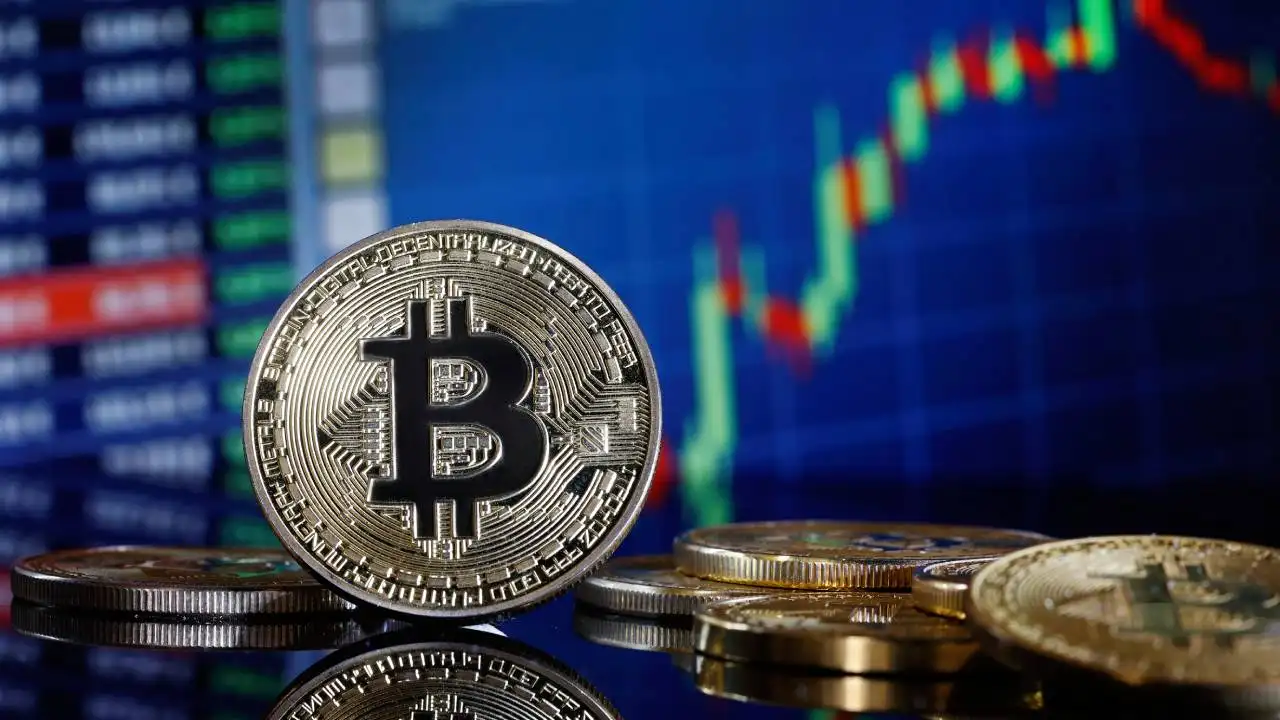Bitcoin ATH in 2025: What Is The Future For The Next 6 Months?

Bitcoin was invented in 2008 by the mysterious person who went by the pseudonym of Satoshi Nakamoto. In its initial year it was no more than a curiosity among enthusiasts. All of this however changed in 2010 when Laszlo Hanyecz made the first documented purchase of a good with Bitcoin and used 10,000 BTC to buy two pizzas, something which would later become a symbol of how far Bitcoin had come.
In mid-2011, Bitcoin momentarily shot up to $30 before crashing to $2 following huge exchange hacks and the Mt. Gox debacle. Yet with these initial downs, the concept of a capped-supply decentralized digital currency kept gaining traction. In 2013, Bitcoin shattered through $250, fell below $50 following a Chinese crackdown, then rallied again to more than $1,100 by November. Volatility was among its defining characteristics, yet so was resilience.
The next great boom came in 2017 when Bitcoin neared $20,000. Mainstream investors, futures markets and headlines across the globe accompanied the mania. A sharp correction then dropped the price to $3,200 by the end of 2018. Then came 2020 and the Covid-19 pandemic.
In November 2021 Bitcoin reached a then-all-time high of almost $69,000 thanks to institutional adoption and increasing acceptance. Rising interest rates and collapses in the kripto space such as happened with Terra Luna projects, led to another decline, and prices dropped below $20,000 in mid-2022. Bitcoin has stabilized in the $110,000 range since then, breaking all its price records.
Today, Bitcoin is not only being viewed as a digital currency or store of value. It also fuels whole ecosystems such as crypto casinos, where people can bet with digital assets in gambling.
Most Important Features
Bitcoin’s most basic rule is its 21 million-coin supply cap. No one can change that rule except the overwhelming consensus of all the players in the network. As of May 2025 about 19.6 million of those coins had been mined. Bitcoin miners’ rewards for creating new blocks are cut in half every four years with the halving, an event which reduces the rate at which new mata uang kriptos are introduced into circulation. Fundamental economics teaches us that if demand rises while supply decreases, then prices are indeed set to rise.
People who favor Bitcoin like to compare it with gold. They claim that, like gold, it is rare and difficult to extract. Paper money can be printed at will, they argue. If investors anticipate inflation, they invest in assets that have a low supply. As long as individuals continue to purchase Bitcoin at a pace greater than new coins being added to circulation.
Economic Trends
Since the 2008 financial crisis, many central banks have kept interest rates very low. This was supposed to prevent the economy from falling into a deep recession. Low-rate policy persisted in most instances. For certain investors, money in savings accounts earned barely any interest. When Covid hit, policymakers loosened and provided bigger stimulus packages. This, however, triggered the concern that there would be an excess of printed money and bring inflation.
The idea of Bitcoin as an inflation-hedging digital asset drew increasing attention. As real yields on government bonds went negative, or as inflation outpaced interest, investors began to seek other alternatives for more attractive yields. The way that Bitcoin moves is generally in the opposite direction of safer assets, such as government bonds. As inflation decelerates and central banks hint at rate reductions or fresh easing, riskier assets such as Bitcoin move up in price.
Institutional Moves
At first, it was predominantly retail investors and tech enthusiasts who were interested in Bitcoin. In 2020 and 2021, the big institutions began to buy Bitcoin. Hedge funds, asset managers, and blue-chip companies invested in Bitcoin. Tesla’s purchase of Bitcoin received plenty of press coverage and was considered a positive move by many.
A spot Bitcoin ETF holds Bitcoin, enabling ordinary investors to invest in it through conventional brokerage accounts without them having to deal with wallets and private keys. The U.S. Securities and Menukarkan Commission approved multiple spot Bitcoin ETFs, including those by reputable companies like BlackRock and Fidelity. They have brought Bitcoin within reach of retail and institutional investors.
Rules and Regulations
Regulators provide the environment for Bitcoin mining and trading. Governments in some countries have embraced crypto companies, set well-defined rules, and licensed the exchanges. Singapore, Japan, and most of the European countries, under the Pasars in Crypto Assets law, have done so. Clear rules helped build trust by attracting reliable service providers and investors. In places where Bitcoin was banned or restricted, trading dropped temporarily.
China’s 2021 prohibition on mining and exchange drove miners abroad and eliminated some speculative demand. In the United States, the SEC has set its sights on exchanges, custody of assets, and suggested draconian rules for crypto lenders. If strict rules or high taxes scare away investors and trading drops, it could hurt the value of the assets. But more even-tempered regulation can attract new participants who were afraid of a free-for-all market with no protections.
Technology
Bitcoin’s code has developed in tiny increments. The network updated with SegWit in 2017. That update solved some of the technical issues and optimized the efficiency of blocks. In 2021, Taproot upgrade enhanced privacy and enabled more sophisticated smart-contract capabilities. Perhaps most significantly has been the development of the Lightning Network. The second-layer network processes payments off the main chain.
This allows for cheap, instant Bitcoin transactions, with only the final results recorded on the main chain. Developers are also testing new ways to make Bitcoin more private and connect it with other blockchains. These upgrades could lead to more real-world uses for Bitcoin, beyond just investing or speculation.
The Next Six Months
Through May 2025, leading central banks in the U.S., the Eurozone, and the U.K. hold interest rates higher than during the pre-pandemic era. They seek to rein in inflation that spiked in late 2021 and carried over into 2023. Investors track numbers like job gains, consumer prices, and economic growth in an effort to forecast when rate cuts or new bond buying could begin.
If inflation comes down sooner than anticipated and interest rates decline, risk assets are sure to gain. Bitcoin’s value could rise significantly if investors start to believe that money is flowing freely again. If inflation comes back to its former level or increases, and central banks maintain or increase rates, the attractiveness of Bitcoin as a high-risk, zero-yielding asset can diminish.
Network Growth
The rollout of the Lightning Network and merchant adoption will determine Bitcoin’s utility. More user-friendly wallets and merchant payment solutions could see Bitcoin move beyond speculation. When regular people start using BTC for everyday purchases, demand will increase.
Most of the new Texas mining farms are harnessing wind and solar energy, which is making Bitcoin cleaner. If mining farms continue to transition to renewables, it would appease environmental critics and unlock sustainability-focused investors. However, if there is a sharp increase in energy prices or governments enact stringent emission regulations, some miners will close shop. That would lead to network security and sentiment declining temporarily.
Market Mood
Market sentiment and world politics will typically control Bitcoin’s extreme volatility. Bitcoin is also a haven because it is a digital asset with no boundaries. When tensions increase or sanctions are imposed on large economies, money may move with Bitcoin rapidly.
But if geopolitical tensions relax and the stock markets boom, investors can shift out of crypto to mainstream assets if they so wish. This is driven by news reporting and social media rumors. A handful of favorable headlines can lead to a sudden rally, and bad news can lead to sudden sell-offs. In the next half year, look out for volatility when breaking news of big events happens.
Risks
Buying Bitcoin over the counter in the coming months could offer big opportunities, but also clear risks. On the positive side, Bitcoin’s fixed supply of 21 million and the upcoming halving in April 2028 support its image as a scarce asset. At the same time, U.S. spot ETFs are bringing in large amounts of institutional investment. Real-world uses like remittances through the Lightning Network and growing DeFi applications may also boost demand beyond just speculation.
Regulatory moves are also uncertain: the SEC may apply more stringent regulations to ETFs or exchanges, while further European or North American emissions regulations or energy taxes might push miners’ costs and influence sentiment. Macro shocks or technological errors (e.g., large network outages) may bring on record price corrections. Investors must offset such influences with controlled position sizing and well-thought-out exit strategies.
Engaging with Bitcoin
Any beginner interested in learning about Bitcoin must begin with the fundamentals. Online tutorials, video courses, and discussion forums teach blockchain technology, wallet security, and how transactions function. Beginners can try using small amounts of Bitcoin to practice safe storage and sending.
Well-established exchanges such as Coinbase, Kraken, and Binance provide simple on-ramps. Reviewing ratings, fees, and security records helps with avoiding suspicious sites.
After trying spot trading, some people move on to decentralized finance, where they can lend or borrow Bitcoin and other cryptocurrencies. More advanced users may experiment with algorithmic trading software that automatically buys and sells according to rules. Although automated trading is risky in the event markets abruptly change.
Blockchain gaming and non-fungible tokens add an element of fun, but also high risk. Stake provides provably fair Bitcoin casino games and sportsbook betting. These are entertaining but may also lead players to spend more than they initially intended. It’s very important to set time limits and budget limits. For more information, participate in Reddit forums, Twitter chats, and online meetups to stay involved with new concepts.
2025 and Beyond
Looking past 2025, we can adopt a long-range perspective. Bitcoin is viewed by many as a financial experiment in decentralized currency. It has endured attacks, forks, regulatory crackdowns, and economic crises for more than a decade. The next halving in early 2028 will again cut miner rewards in half, rendering new supply even slower.
If institutional investment, pension funds, and new real-world use cases hold up, scarcity might push prices much higher in five to ten years’ time. Central bank digital currencies could, however, threaten Bitcoin by providing regulated, speedy digital cash. Governments may also crack down on regulation or introduce taxes that decelerate adoption. However, Bitcoin’s borderless nature may sustain it for individuals in volatile regions where local currencies collapse, be it due to inflation or political instability.
Continued improvements to Lightning, privacy solutions, and cross-chain tools can further Bitcoin’s utility as both a store of value and a payments network. In any case, price cycles will probably continue to be volatile. Risk management and patience are what matter most. Those who build their positions over time, hold on during downtrends, and stick to best practices, stand the best chance to gain from Bitcoin’s next big runup and beyond.
Original author: napkin Original translation: TechFlow In 2021, market reflexivity was mainly driven by several mainstream narratives (such as DeFi and NFT) and ample liquidity. However, today, the market is clearly fragmented. Why does this cycle have only breadth but no depth? I haven’t written anything here for a long time, but I would like to take advantage of the arrival of 2025 to briefly share some of my recent thoughts, as an update of my recent thoughts as an ordinary market enthusiast. That being said, this content in no way constitutes any investment advice. Please always do your own due diligence and research thoroughly before investing in this “casino clown world” we call cryptocurrency. Preface As we continue to explore this cycle, one thing is clear: this is completely…







